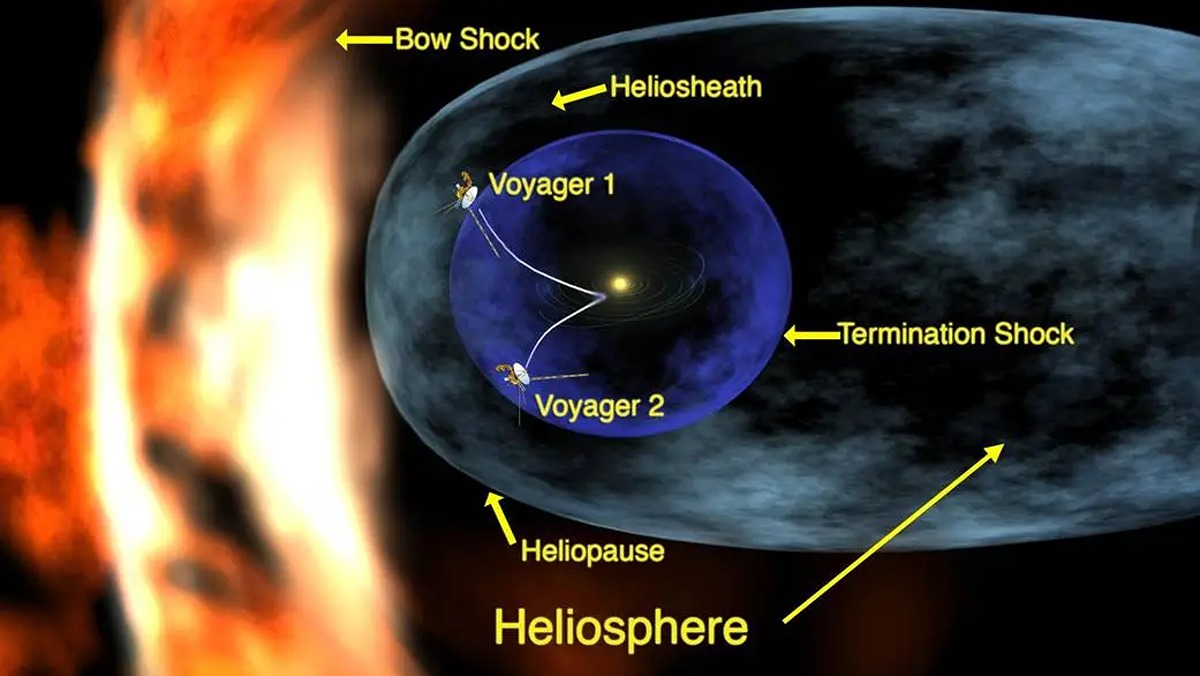The distant and chilly Voyager 1 spacecraft did a intelligent thruster trick to assist it telephone house.
Voyager 1, probably the most distant human object that’s now flying via interstellar area, had thruster points making it troublesome for the spacecraft to remain pointed at Earth when calling house. Until Voyager 1 may make a swap to a distinct thruster set, the 47-year-old spacecraft would sail on alone with out assist from Earth. Making issues worse, Voyager 1 is so outdated that sudden modifications may harm the spacecraft.
“All the selections we must make going ahead are going to require much more evaluation and warning than they as soon as did,” Suzanne Dodd, Voyager’s mission supervisor at NASA’s Jet Propulsion Laboratory that manages the mission, mentioned in a assertion on Tuesday (Sept. 10).
The science of Voyager 1 is essential to area science because it tells us extra about interstellar area, which means the area of the cosmos outdoors of the attain of the solar’s gravity or particles.
However the spacecraft’s growing older nuclear energy supply is way diminished, and would not have a lot energy to play with. So engineers at JPL launched into a rescue plan to assist the spacecraft’s pointing capabilities with out risking its remaining useful science devices.
Voyager 1 and its twin, Voyager 2, launched on their preliminary missions in 1977 to review the distant photo voltaic system. They collectively flew by 4 largest outer photo voltaic system planets by 1989 and proceed, with tweaks for his or her age, to ship science from afar even after each exited the photo voltaic system within the early 2010s.
As with people, growing older introduced modifications to the Voyager techniques. The gas tube for his or her thrusters have been vulnerable to clogging for greater than 20 years; that occurs as a rubber diaphragm in every spacecraft gas tank degrades, making a silicon dioxide byproduct that clogs the road.
Fortunately, every Voyager has three thruster branches obtainable to be used: two angle branches initially designed for orientation, and one trajectory correction department made for pathway modifications in area. To be clear, engineers have been overcoming the surprising for many years by creatively repurposing components of Voyager. This new thruster scenario, nevertheless, introduced extra challenges.

On Voyager 1, a gas tube within the first angle propulsion department started to clog in 2002, necessitating a swap to the second department, NASA officers wrote in the identical assertion. When the second department started appearing up in 2018, Voyager 1’s orientation maneuvers all switched to the trajectory correction maneuver department.
However with use, this single department of the trajectory correction system has been clogging severely, to an excellent worse extent than both angle propulsion department did earlier than.
JPL subsequently determined to modify again to the angle propulsion system, however that they had to take action with much less energy obtainable than in 2002. Voyager 1 is working on important techniques solely, and even a few of its heaters have turned off.
Between that crucial lack of some heaters — and the diminished radiant warmth from fewer techniques working on the spacecraft — Voyager 1’s dormant angle propulsion thruster department was so chilly that even turning it on may trigger harm.
Scrutinizing Voyager 1 rigorously from afar, JPL engineers decided switching one of many heaters on for an hour could be sufficient. The command labored and on Aug. 27, one of many angle thruster branches efficiently reoriented Voyager 1 in the direction of Earth for the primary time in six years.
Voyager 1 required one other type of inventive troubleshooting just lately; engineers in June resolved a knowledge transmission downside plaguing the spacecraft for months.
Engineers at JPL plan to maintain the Voyager twin spacecraft working till at the very least the fiftieth anniversary of the mission in 2027, Dodd instructed reporters in June at a gathering of the area science group’s outer planet evaluation group, in accordance with SpaceNews.
The group extra typically offers with exploration actions within the outer reaches of the photo voltaic system; it will possibly present recommendation to NASA, however the company doesn’t essentially observe suggestions, in accordance with NASA.





